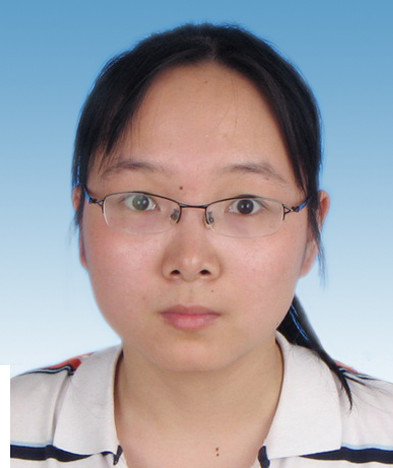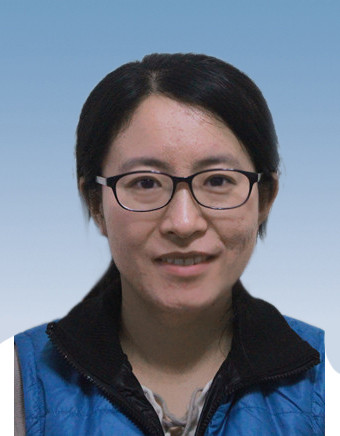The preliminary examination of utility models for substantive defects is conducted to look for “conspicuous” ones. This article will make a comparison and analysis from three aspects: subject matter, written description and the lack of necessary technical features.
I. Patent Law, article 2 (2) and (3)
With regard to subject matter examination, the most notable difference between inventions and utility models is: invention patents may cover process while utility model is limited to products only. In other words, an invention means a new applicable technical solution for the composition, structure of a product, or the combination thereof; a utility model means new technical solution for the appearance, design, or the combination thereof.
The subject matter examination of utility models should focus on three aspects: product, appearance and/or structure and technical solution. As such, the same attention must be paid to the dependent claims as to independent ones.
A utility model patent protects the product and does not protect processes which include application of the product or the use itself. When a claim includes process limitations, such as a product’s manufacturing steps, processing conditions, or computer program itself, etc., the preliminary examination does not turn on whether it is a known process, but is treated as limitations for process per se, which is not a patentable subject matter for utility model. All processes and products of nature unassisted by man are excluded from the utility model subject matter for protection. But it is worth noting that it would be eligible utility model subject matter if the name of a process in the prior art is used to define a product’s shape or structure. If a claim contains both structural limitations of the product, and a process subject matter, the claim is not eligible for utility model subject matter, as in Case 1.
 |
| Li Bin |
Case 1
An antibacterial fabric, comprising a fabric material and an inorganic antibacterial agent, wherein said fabric material being a cotton layer and a polyester layer being conjoined by glue; and by a first step of spraying said inorganic antibacterial agent over said fabric material, and then by padding, drying and baking.
Also, a utility model appearance limitation may not be defined by the shape of living things or naturally formed shape, as in Case 2, in which the shape of the product can be a definitive dimensional shape under particular circumstances.
Case 2
A decorative mosaic has a shape of natural rain-flower pebble. A technical solution is a congregation of technical means to apply natural laws for solving a technical problem. Therefore, in order to determine the patentable subject matter of a product shape claim relating to the appearance of a product, it has to start with the technical problem to be solved. If the product’s shape, surface pattern, color or their combination do solve certain technical problems, the features constitute patentable subject matter for utility model protection. In contrast, if the product’s shape, surface pattern, color or their combination do not solve certain technical problems, the features then do not constitute patentable subject matter for utility model protection. For utility model applications for aesthetic products or crafts, as long as the product uses certain technical means and produces technical effect, the product presents patentable subject matter, see Case 3.
Case 3
A dynamic landscape painting having an anti-skid device wherein a drive shaft having rough surface for anti-skidding effect.
The text, symbols, graphics or the combination of the new patterns on the product surface, do not belong to the subject matter of utility patent protection.
For the examination of utility models, the examiner needs only look to the technical background in the written description to understand whether a new technical solution is involved. As long as the technical solution in the application has improvement distinguishable from what the applicant described as background technology, the application can be considered as “a new technical solution.” If the technical solution in the application files (including the claims and written description) has been disclosed before, or has been known products with existing technology, it is considered that the application does not present a “new technical solution.”
Unlike invention patent examination which involves searches, the utility model patent examination under Article 2 (2) of the Patent Law does not have to meet novelty or inventiveness requirement to be a new technical solution; instead it only addresses the “technical solution” itself.
 |
| Yu Feng |
II. Patent Law, article 26 (4)
According to Article 26 (4) of the Patent Law, a claim must be supported by the written description. The three circumstances are as follows: 1. Written description, namely, whether the relevant contents are disclosed in the written description, or can be literally and unequivocally derived from the text of the written or the drawings. 2. Genus vs. species, namely if a generic claim contains assumptive content, with unpredictable result or estimate, it can be deemed that the genus exceed the scope of the disclosure in the written description. If a person having ordinary skill in the art has reason to doubt that one or more species or embodiments included in the genus or its next adjacent homologue in the generic claim may not work as intended for the underlying invention or utility model for solving the proposed technical problem or its equivalent, the claim should be deemed as not being supported by the written description. 3. Functional limitation, i.e. if the functional limitation is accomplished by the specific embodiments disclosed in the written description, and the person skilled in the art is not aware of a substitute mode of embodiment not disclosed in the written description that can also perform the function, or such person has reason to doubt that one or more embodiments may not solve the technical problem for the invention or utility model, and produce the same technical effect, the functional limitation may not be used in the claim that embraces the above substitute or embodiments that cannot solve the technical problem.
Specifically for utility models, the examination requirement would be “apparent support.” But what is the apparent support? It is mainly reflected in: 1. Consistent exposition, Examination under Article 26 (4) and no functionally restrictive statements; 2. Examination with functional limitations; 3. Examination of dependent claims.
When the claim and the written description are consistent, and if the claim does not prominently assert functional language, it is generally considered that the claim is supported by the written description. If the claim and written description have inconsistent statements, examiner needs to determine whether the written description (for invention only) contains all of the structural limitations, and whether the structure is consistent (i.e. whether it has all of the technical elements); if not, the applicant is required to make amendment within the original scope. For utility model application, the task can be scaled down appropriately when judging whether the scope of claims is supported by implementation methods. Regarding language of functional limitation, if an independent claim is merely functional limitation, i.e. the claims protect the purposes of invention only, the claim is deemed not supported by the written description; while an independent claim is partially functional, as in mean-plus-function form, should be considered whether the means to achieve this function exists in the technologies of the prior arts. If the applicant directly or indirectly believes that the measures for achieving the function exist widely, such a claim is allowed to exist; if the applicant considers that the specific mean to achieve this function is part of the application content, examiner needs to consider whether the number of implementation methods are adequate to inspire others to achieve this function.
In addition, when examining utility models, it is the principle not to analyze whether the functional limitation contains technical problems that cannot achieve the purpose of invention, which is also the biggest difference from invention application examination when applying this provision.
When examining dependent claims, utility model application should also be examined on whether the characteristics of the dependent claims have corresponding descriptions in the written description. Since the modification form for utility model application allows adding the contents of the claims completely into the specification, to a certain extent, the scope of protection and scope of disclosure has no difference for utility model application. As stipulated in the Guidelines for Patent Examination, most of the examination for Article 26 (4) of Patent Law refers to the contents of substantive examination. Since the examination for utility models is preliminary examination, in practice examiners often do not follow the procedures provided by substantive examination entirely.
In the context of invention patent application examination, examiners strictly follow the relevant provisions of the Guidelines for Examination.
III. Implementing regulations of Patent Law, article 20 (2)
Article 20 (2) of the Implementing Regulations of Patent Law provides that “the claims shall define clearly and concisely the matter for which protection is sought in terms of the technical features of the invention or utility model.” In the context of utility model examination, defect cases that do not meet the above requirements are as follows: 1. Some claims only list out the component parts of the subject products, but lack the relative connections and relationships between these components. In this case, examiners should consider whether the claims lack the essential technical features to solve technical problems.
For example: A reverse stapling device, comprising a stamping head, a staple supplying mechanism, an operating handle and a base.
This claim lacks information on how to connect these components to achieve the essential technical features of reverse stapling.
For claims of this kind, examiners should also analyze the disclosure of connection relationship in the written description and consider whether the disclosure is sufficient or not.
2. The additional technical features in dependent claims should be essential technical features in independent claim in most cases. Inspired by the dependent claims, if the examiner can be fully aware that independent claim is lack of the additional technical feature, the examiner should issue an office action.
When commenting a claim in terms of this provision, examiners should always remember: the essential technical features are defined by the technical problems to be solved by the invention, but not the technical problems perceived by the examiner or a person having ordinary skill in the art.
As for the examination of invention, examiners should strictly follow the standard provided by 3.1.2 of Chapter II, Part II of the Guidelines for Patent Examination. In other words, examiners should start from the technical problems to be solved and fully consider the contents described in the specification, so as to determine whether all the technical features in the independent claims are sufficient to distinguish themselves from the technical solutions provided by the background technologies and whether they can solve the technical problems targeted by the invention. In summary, from the aspects of subject matter, supportive issue and lack of the necessary technical features, there are many differences in examination scope and focus between utility models and patent application. “Obviousness” is the premise for examining substantive defect examination for utility model, while the examination on patent applications strictly follows the Guidelines. Examiner should fully consider the contents of claims and the written description and make a comprehensive examination. Examiners should fully understand the difference between the two examination procedures in order to do a good job in examination.
(Translated by Li Guanqun)


